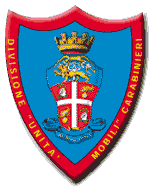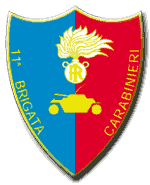
The Polizia di Stato is one of the national police forces of Italy. Alongside the Carabinieri, it is the main police force for providing police duties, primarily to cities and large towns, and with its child agencies it is also responsible for highway patrol (autostrade), railways (ferrovie), airports (aeroporti), customs, as well as certain waterways, and assisting the local police forces.

Law enforcement in Italy is centralized on a national level, carried out by multiple national forces, helped by few limited local agencies. The Italian law enforcement system is considered complex, with multiple police forces and other agencies taking part in different duties. Policing in the Italian system refers to the duties of "full-powered officers" coming from the four national main forces: Polizia di Stato, Carabinieri, Polizia Penitenziaria and Guardia di Finanza. While the duties of these four corps' include investigating and arresting, other local forces carry out limited duties.

In Italy, polizia provinciale is the provincial-level police forces.

Roma Termini is the main railway station of Rome, Italy. It is named after the district of the same name, which in turn took its name from ancient Baths of Diocletian, which lies across the street from the main entrance. It is Italy's busiest railway station and the fifth-busiest in Europe, with a traffic volume of approximately 150 million passengers per year, and with 850 trains in transit per day.
The Polizia Stradale is the national highway patrol of Italy and is a sub-directorate of the Italian State Police.
The Raggruppamento Operativo Speciale (ROS), or Special Operations Group, is part of the Italian Carabinieri.

Torino Porta Nuova railway station is the main railway station of Turin, northern Italy. It is the third busiest station in Italy after Rome Termini and Milan Central, with about 192,000 journeys per day and 70 million travellers a year and a total of about 350 trains per day. Porta Nuova is a terminal station, with trains arriving perpendicularly to the facade. The station is located in Corso Vittorio Emanuele II, right in front of Piazza Carlo Felice.
The Polizia Postale e delle Comunicazioni is one of the units of the Polizia di Stato, the State Police of Italy. Its functions include the investigation of cybercrime.
The Republican Police Corps was a police force of the Italian Social Republic during the Italian Civil War.
The Direzione Investigativa Antimafia (DIA), also known as the Anti-Mafia Investigation Division, is an Italian multi-force investigation body under the Department of Public Security of the Ministry of the Interior. Its main task is the fight against the mafia-related organized crime in Italy.

The Carabinieri Mobile Units Division is the Carabinieri formation, established in 2001, dedicated to the performance of military duties abroad, the military police tasks when abroad, the support to Territorial Organization, the participation in civil protection operations and to ensure the emergency reserve for the General Command.

The 1st Carabinieri Mobile Brigade is a Carabinieri formation tasked with riot control, civil defence and security duties.

The 2nd Carabinieri Mobile Brigade, based in Livorno, is the Carabinieri formation dedicated to military missions abroad, including military police tasks. It employs the 7th Carabinieri Regiment "Trentino-Alto Adige", the 13th Carabinieri Regiment "Friuli-Venezia Giulia", the 1st Parachute Carabinieri Regiment "Tuscania" and the Gruppo di intervento speciale.
The 7th Carabinieri Regiment "Trentino Alto-Adige" is a mobile unit of the Italian Carabinieri. The unit is framed within the 2nd Carabinieri Mobile Brigade and it is headquartered in Laives.

The 1st Carabinieri Regiment "Piemonte" is a riot control unit of the Carabinieri.
The 4th Carabinieri Battalion "Veneto" is a Carabinieri formation tasked with riot control, civil defence and security duties.
The Carabinieri Specialist Units Division is the Carabinieri formation, established in 2001, dedicated to the performance of specialist police activities and the support to Territorial Organization and consisting of highly qualified personnel working with Ministries for the safeguard of socially sensitive issues.

The 11th Carabinieri Mechanized Brigade was the Carabinieri formation, established in 1963 and disestablished in 2001, dedicated to the performance of military duties, the support to Territorial Organization, the participation in civil protection operations and to ensure the emergency reserve for the General Command.
The following is the structure of the Italian Navy as of June 2020. It is considered a multiregional and a blue-water navy.

The 6th Carabinieri Battalion "Toscana" is a Battalion of the Carabinieri Mobile Units Division tasked with riot control and emergency services. The Battalion is garrisoned in Florence.












